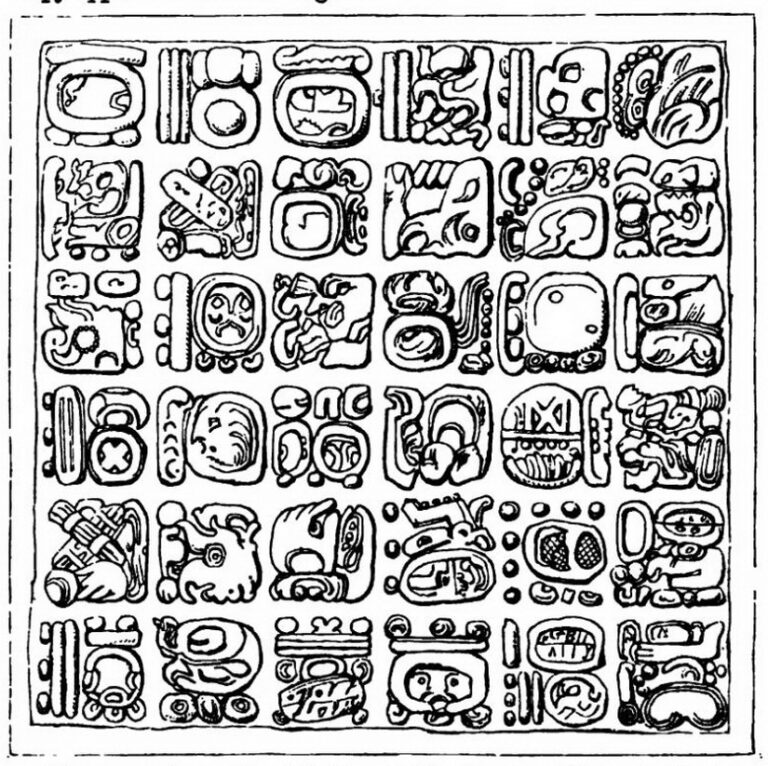Authority and Trust

The slow, magnetic mystery of Hernan Diaz’s Trust, out today, makes the most of the multilayered resonances of trust as a concept, scaffolding generational fortune, market forces, and human relationships into a fascinating whole. Conveyed in four parts, each of which comprises a manuscript telling a different version of the same tale, the novel tracks the lives of Andrew and Mildred Bevel while also telling a story of capital, power, and destruction in early twentieth century America.
What is especially intriguing in Trust is the way narrative distance and style are wielded as signifiers of truth; as the novel progresses, the differing narrative strategies of each section create a progression of collapsing narrative distance that brings the reader closer—one feels—to the version of the story they can trust. The paradoxical relationship of these strategies to the narrator’s power and authority (actual, perceived, and otherwise) adds further complexity, and the ultimate effect of Diaz’s novel is one that requires and rewards a reader’s trust through a masterfully executed exploration of storytelling itself.
The first iteration of the central narrative is “Bonds,” in which writer Harold Vanner has published a wildly popular novel about stock market savant Benjamin Rask and his philanthropic wife, Helen. The extreme distance and detachment of the narrative voice is a risky opening gambit; while the authoritative omniscience strikes one as “authentic,” with regard to its historical setting, the mannered tone seems to hover well above the text, never fully situating itself within the narrative. The effect is immediate and ongoing, relaying the major events of the Rasks’ lives largely in summary, rather than shown scenes. Given no opportunity to see the characters interact without the mediating reportage of the omniscient narrator, “Bonds” lands with the weight of biography. Of Benjamin Rask, Vanner writes, “[H]e was an inept athlete, an apathetic clubman, an unenthusiastic drinker, an indifferent gambler, a lukewarm lover. He, who owed his fortune to tobacco, did not even smoke. Those who accused him of being excessively frugal failed to understand that, in truth, he had no appetites to repress.” If it seems uncomplimentary, that is beside the point. The reader is shown nothing to the contrary. The first actual speech in “Bonds” does not arrive until the end of section two, when Benjamin and Helen are avoiding the general spectacle of a social event they’re both attending. Benjamin is trying, awkwardly and hesitantly, to engage her; she is not especially interested. Finally, Benjamin turns to her and says, “‘I.’” He never finishes what he is attempting to say. It stands as an assertion, a futile one, since it is Helen’s interior response that matters more: “One way or the other, she had no doubt she would succeed in influencing her husband and obtaining the independence she so longed for.”
But it is noteworthy that Benjamin’s only externally uttered word is “I.” That is the aim of Vanner’s “Bonds” within the scope of Diaz’s Trust: to expose Benjamin’s ego, which ultimately culminates in Helen’s traumatic death as a result of an experimental treatment at the hands of a doctor within Benjamin’s vast web of influence. Other devices of authority deployed in “Bonds” include the text of various letters sent to Helen; after the crash, the artists she has supported in the past start refusing her invitations because they either resent the way Benjamin has benefited from everyone else’s misfortune or because they directly blame him for the market’s failure. The letters themselves are unremarkable, except that those few paragraphs from characters who appear only in passing are allowed to have their own voices appear directly on the page in a way Benjamin Rask is not. This is Vanner’s aim: to shape the perception of Benjamin Rask in the minds of New Yorkers in the same way Rask’s wealth has shaped his life, and Helen’s, and the world, without ever being held to account for the latter two, which are accounted tragedies here.
If the first section of Trust is marked by its distance and reticence, the second is most notable for its semblance of candor. “My Life” is an apparent autobiography of Andrew Bevel, a man strikingly similar to Benjamin Rask, whose wife, Mildred, bears little resemblance to Helen. Bevel’s “My Life” unspools immediately in the first person, knowing and energetic: “My name is known to many, my deeds to some, my life to few.” Where he is compelling, he is so seemingly in his own words. Where he is odious, the same holds true: “Women represented only 1.5 per cent of the dilettantish operators at the beginning of the decade. At the end they neared 40 per cent. Could there have been a clearer indicator of the disaster to come? The descent from collective illusion to hysteria was only a matter of time. I knew it was my duty to do what I could to rectify this situation.” The story he tells of his life is one in which his financial success is the product of careful study and his marriage a tender, blessed thing made all the more precious by Mildred’s simple perfection and her fatal cancer. Certain anecdotes, by virtue of their specificity, such as Mildred engaging him over the latest detective novels she was reading, reinforce the persona.
The unfinished edges of Bevel’s text provide another veneer of verisimilitude absent in Vanner’s “Bonds.” “My Life” includes multiple gaps that attest to the work-in-progress nature of the story, and those gaps are frequently attended by self-conscious annotations that demonstrate awareness of narrative structure and character development, as well as a firm commitment to controlling the reader’s perception. In the penultimate section of “My Life,” one of these notes for future completion reads, “Recent achievements, since Mildred’s passing. Prospering despite grief and hostile political conditions. List.” Despite its first-person declaiming, there is nothing spontaneous or diaristic here; the certainty and purpose of the outline provide their own kind of solipsistic authority. None of this, however, answers the question of why “Bonds” and “My Life” overlap in so many respects.
The reader must rely on Trust’s third section, “A Memoir, Remembered,” for the reveal: Vanner’s “Bonds” is a thinly veiled reconstruction of the life of Andrew and Mildred Bevel, one that Andrew resents for the liberties he says it takes and upon which he has been revenged. “A Memoir, Remembered” is told from the first-person perspective of Ida Partenza. Ida’s section moves between two timelines: her present, in which the Bevel home is opened as a museum long after both of the Bevels are dead, and her past, in which she was hired by Bevel to write “My Life.” Ida, from her position as Bevel’s amanuensis and ghostwriter, is one conduit toward truth, parsing the distance between the bare details he provides and the florid way he wants her to write them. As they become more familiar with each other, Bevel even cannibalizes Ida’s own stories and reports them back to her as details in his and Mildred’s life.
Here is where the complicated relationship between power and narrative authority begins to be revealed. Despite the authoritative omniscience of Vanner’s novel that occupies the first part of Trust, Ida learns that Vanner himself has been destroyed, artistically: Bevel has bought a controlling interest in Vanner’s publisher, all extant copies of his book, and has even orchestrated the disappearance of it from the New York Public Library. Thus, Vanner and his work are rendered silent; no details of Helen in “Bonds” are permitted to overlap with Mildred in “My Life.” As Bevel says, “‘How incongruous would it be to find traces of Vanner in a world where Vanner never existed?’” The shaping of reality to align with his own vision of it will always be more important than the truth, even at the expense of erasing Mildred’s real self.
But Ida is also a shaping hand from the very start of her narrative, despite her general lack of power, financial, professional, or otherwise: Bevel’s voice in “My Life” is her construction, cobbled together through her reading of “great men”; the self-assured oratory of this shockingly wealthy man is the creation of the daughter of an Italian anarchist, a young woman raised by a single father in relative poverty amid virulent anti-Italian sentiment. Ida also creates a multitude of fictions around herself: in the first round of interviewing, she adopts an Anglo name; at later points, she constructs elaborate excuses for both her father and her boyfriend in order to continue her work. And though “My Life” is never finished because Bevel dies unexpectedly in the midst of the project, he unwittingly gives Ida a key toward truth: access to the house, which she subverts into access to Mildred’s forbidden room, where she finds a scrapbook that reveals a woman staggeringly unlike the fragile creature Bevel has created. When the Bevel mansion is opened as a museum, years later, Ida returns and seeks out what remained of Mildred’s papers. By exercising all the power she has—still so little compared to Bevel—she discovers Mildred’s diaries.
The final section of the novel, “Futures,” is the diary volume of Mildred’s final days. Those days are of especial interest—Bevel’s most virulent complaint about “Bonds” is Vanner’s portrayal of Helen as a disfigured madwoman who dies frightfully in the throes of a medically induced seizure her husband endorsed; in “My Life,” Mildred’s final moments on the page are in the presence of a traditional string quartet: “At the end of the recital she looked so full of life and vigor, almost as if she hand been magically cured.” Thereafter, Bevel goes away on business, and when he returns, “she was no longer with us,” her death achieved as blandly and benignly as the rest of his portrayal of her. “Futures,” however, reveals Mildred’s formidable intellect and adventurous artistic tastes. In her diary, she calls the quartet “trite” for their “[s]hort, predictable program.” She relates her understanding of financial markets as though it is music; her thinking is graceful, acute, acrobatic, and the implication of her understanding creates a tectonic shift against the previous narratives. Portions of these traits appear in “Bonds,” but more as oddities to be marveled at that are largely repressed by Bevel—the thing that frightens him most is that the world might know Mildred for her true capabilities.
The diary thus becomes the text’s truest portion, not simply because it offers the direct voice of the character who has been treated as a kind of puppet by two different men with agendas to serve, but because its style is convincing. And the details she relays are staggering against the previous versions: “Peal of bells from the unseen church. My 1929 plan was much like the bell motif. Short selling is folding back time. The past making itself present in the future…A song played in reverse. But going against the mkt., everything is turned on its head.”
As Mildred’s condition worsens, pain and the morphine given to blunt the pain reduce the diary at the level of language to what is most immediate. Sensory impressions, flashes of image and sound conjure the experience in vivid fragments:
Ferns within ferns within ferns within ferns
Bird-crowded treesSome leaves reddening at the edges
La fauve agonie des feuilles
Keeping one here, suspended in its agonyA bell in a bell jar won’t ring
By this point in the novel, the most startling truth has already been laid bare—it was Mildred’s brilliant mind most fully behind Andrew Bevel’s vast fortune, and it was Mildred’s mind behind the terrible folly of 1929. These final details, then, testify to the truth of the whole diary—the version of the story one is meant to trust—in their extraneousness. What is recorded here does not serve Mildred and she does not need it to, unlike Vanner’s vengeful take, Bevel’s own weaponized idealism, or even Ida’s half-constructed, well-intentioned inquiry. “Futures” is private, revelatory, stylistically intimate, and told from the point at which Mildred no longer even has power over her own body. As the final voice of the novel, this provocative inversion of perceived authority carries readers of Trust to a phenomenally satisfying final note.


